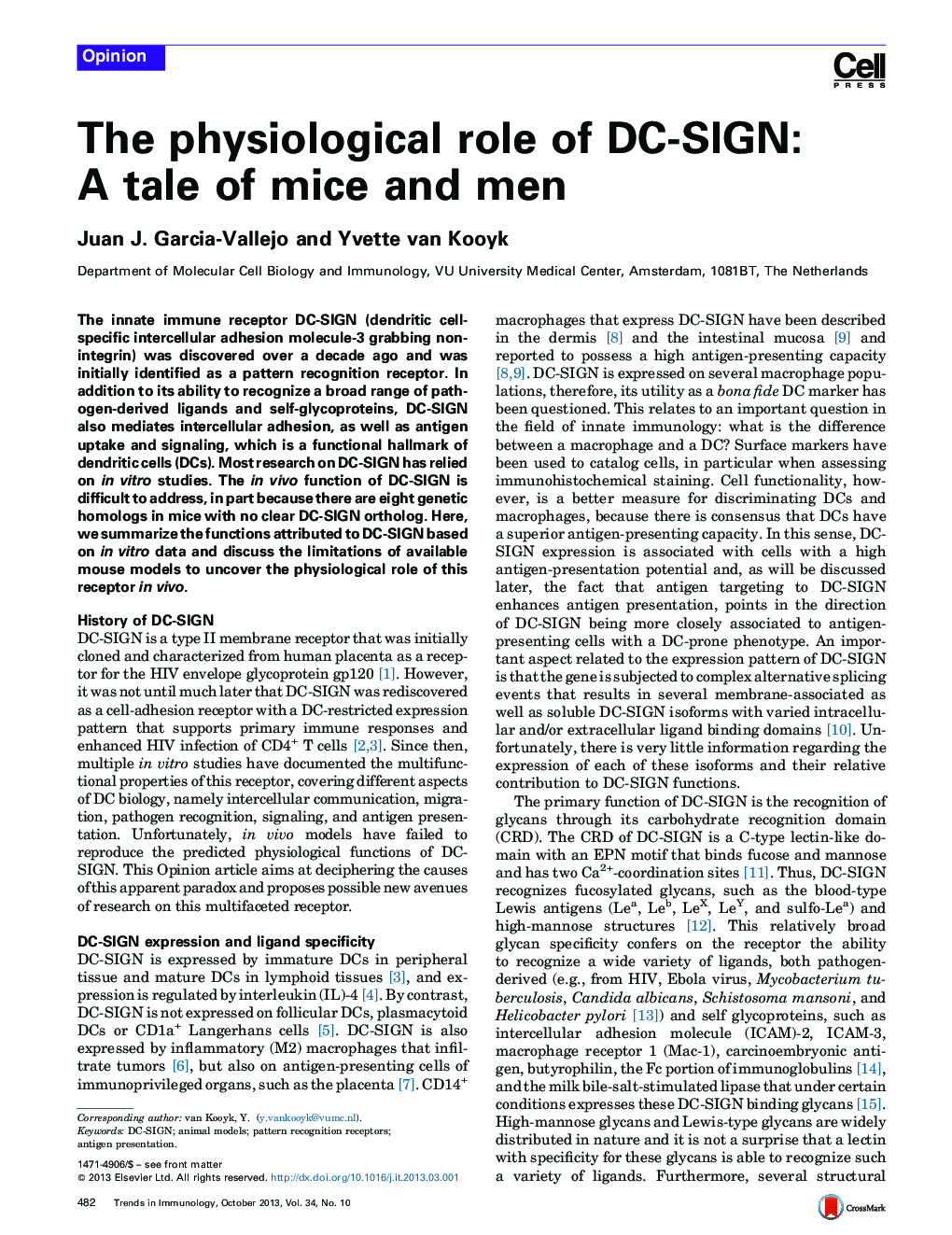| Article ID | Journal | Published Year | Pages | File Type |
|---|---|---|---|---|
| 4359952 | Trends in Immunology | 2013 | 5 Pages |
•DC-SIGN is a multifunctional C-type lectin receptor on antigen-presenting cells.•Its functions include adhesion, migration, signaling, and antigen uptake/presentation.•All evidence supporting DC-SIGN functions is based on in vitro assays.•The absence of a functional DC-SIGN ortholog hampers the study of its physiological role.
The innate immune receptor DC-SIGN (dendritic cell-specific intercellular adhesion molecule-3 grabbing non-integrin) was discovered over a decade ago and was initially identified as a pattern recognition receptor. In addition to its ability to recognize a broad range of pathogen-derived ligands and self-glycoproteins, DC-SIGN also mediates intercellular adhesion, as well as antigen uptake and signaling, which is a functional hallmark of dendritic cells (DCs). Most research on DC-SIGN has relied on in vitro studies. The in vivo function of DC-SIGN is difficult to address, in part because there are eight genetic homologs in mice with no clear DC-SIGN ortholog. Here, we summarize the functions attributed to DC-SIGN based on in vitro data and discuss the limitations of available mouse models to uncover the physiological role of this receptor in vivo.
